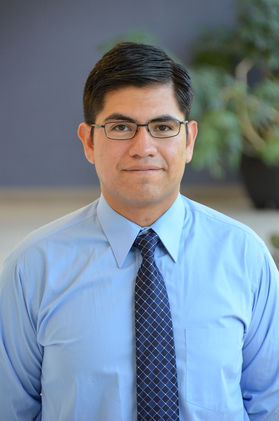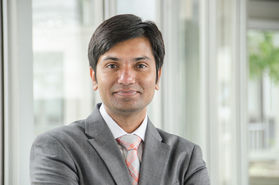While the future of vehicles may be driverless, West Virginia University is steering the technology in the right direction.
More and more cars being sold today include semi-automated features ranging from self-parking to lane departure to automatic braking, but fully automated vehicles are on the horizon. WVU’s researchers are working to improve vehicle and smart infrastructure technology that underpins their development and their benefit to communities in areas such as safety, energy, traffic, economic opportunity and more.
Tomorrow (Sept. 20), WVU will host an autonomous vehicle forum to discuss the research, development and impact of driverless vehicles, continuing WVU’s commitment to fostering economic development to chart a new course forward for West Virginia. The event is part of Congressman David B. McKinley’s educational series.
 Attendees will hear presentations from experts, industry leaders and others on a broad range of topics related to autonomous vehicles. Victor Fragoso, assistant professor in the Lane Department of Computer Science and Electrical Engineering, will be one of the panelists. His research is focused on improving the artificial intelligence of autonomous agents, which includes driverless vehicles.
Attendees will hear presentations from experts, industry leaders and others on a broad range of topics related to autonomous vehicles. Victor Fragoso, assistant professor in the Lane Department of Computer Science and Electrical Engineering, will be one of the panelists. His research is focused on improving the artificial intelligence of autonomous agents, which includes driverless vehicles.
“With autonomous vehicles, the car is essentially a robot – an agent that perceives the world and understands what is happening in it,” Fragoso said. “There is a lot of variability in the world, so we derive algorithms that take that into account and help the vehicle understand the world as robustly as possible so that it can take action.”
Fragoso describes an algorithm as a recipe to solve a problem or task.
And the vehicles of the future need to have the most comprehensive cook book around.
Fragoso is currently working on a project funded by the National Science Foundation that will help self-driving cars “see” better. He is investigating ways in which the vehicle computer can reason about the different objects it detects and its confidence in accurately recognizing those objects.
Cameras onboard self-driving vehicles gather two-dimensional images. His work develops models that use that data to generate three-dimensional reconstructions of the environment that help the vehicle localize itself (or determine where it is in the city).
Fragoso is also working on artificial intelligence capable of adapting itself to a dynamic environment.
He explains that the models he develops predict common patterns, providing the vehicle with information to make decisions such as when to accelerate, turn and brake, but there are always rare events and outliers that have to be taken into account and embedded into the algorithms.
“Vehicles must account for every possible failure, and there are so many variables,” Fragoso said. “That means we must build the algorithms to make them as adaptive as possible. They must account for every possible failure and scenario that could occur, which requires a lot of data and processing. That means it is also important for them to be fast and efficient.”
Kakan Dey , assistant professor of civil and environmental engineering and director of the connected and automated transportation lab, is working on several projects related to how driverless vehicles can benefit communities.
, assistant professor of civil and environmental engineering and director of the connected and automated transportation lab, is working on several projects related to how driverless vehicles can benefit communities.
“The ultimate purpose of these advancements in technology and infrastructure is to serve society’s transportation needs,” Dey said.
One research project he is working on is focused on the shared mobility concept, which seeks ways to provide increased access to transportation for wider spread communities through a service model similar to ride-sharing models like Uber.
Typically, shared mobility is designed for large, urban cities, but Dey is exploring how that model could be implemented in rural communities such as those in West Virginia.
“To develop effective models, we have to find out what are the transportation needs of communities as well as the characteristics of those communities,” Dey said. “Integration with existing transit systems to improve end-to-end service for communities could make things more economically viable and increase the prosperity of the state.”
Dey is also working on a project related to safety implications of autonomous vehicles operating with conventional non-autonomous vehicles.
Both Dey and Fragoso say that one of the biggest challenges for the future of autonomous vehicles is the transition phase of a “mixed” traffic environment that includes both manual and driverless vehicles.
“We have to teach them to live together,” Fragoso said. “From and artificial intelligence perspective, we have to do a lot of reasoning and prediction of what the human driver is going to do so that the driverless vehicle can react.”
Dey says that with hundreds of autonomous vehicles on the road being tested, new state and federal laws and policies are necessary to facilitate the maturation of this new frontier and promote new technologies.
“Although autonomous vehicles may fall in the transportation engineering domain, changing vehicle technology and smart infrastructure is truly interdisciplinary,” Dey said. “There is a huge social component and this paradigm shift will have an impact on nearly all aspects of our lives.”